
A paratrooper or military parachutist is a soldier trained to conduct military operations by parachuting directly into an area of operations, usually as part of a large airborne forces unit. Traditionally paratroopers fight only as light infantry armed with small arms and light weapons, although some paratroopers can also function as artillerymen or mechanized infantry by utilizing field guns, infantry fighting vehicles and light tanks that are often used in surprise attacks to seize strategic positions behind enemy lines such as airfields, bridges and major roads.
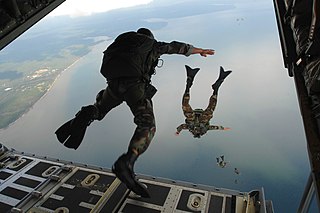
Airborne forces are ground combat units carried by aircraft and airdropped into battle zones, typically by parachute drop. Parachute-qualified infantry and support personnel serving in airborne units are also known as paratroopers.

The 1st Airborne Division was an airborne infantry division of the British Army during the Second World War. The division was formed in late 1941 during the Second World War, after the British Prime Minister, Winston Churchill, demanded an airborne force, and was initially under command of Major General Frederick A. M. "Boy" Browning. The division was one of two airborne divisions raised by the British Army during the war, with the other being the 6th Airborne Division, created in May 1943, using former units of the 1st Airborne Division.
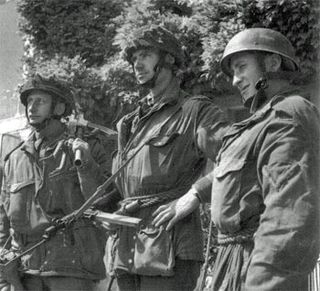
The 6th Airborne Division was an airborne infantry division of the British Army during the Second World War. Despite its name, the 6th was actually the second of two airborne divisions raised by the British Army during the war, the other being the 1st Airborne Division. The 6th Airborne Division was formed in the Second World War, in mid-1943, and was commanded by Major-General Richard N. Gale. The division consisted of the 3rd and 5th Parachute Brigades along with the 6th Airlanding Brigade and supporting units.
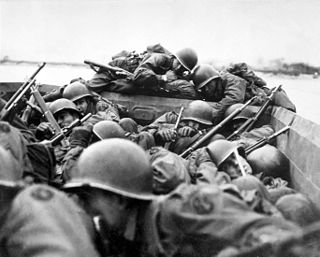
Operation Plunder was a military operation to cross the Rhine on the night of 23 March 1945, launched by the 21st Army Group under Field Marshal Bernard Montgomery. The crossing of the river was at Rees, Wesel, and south of the river Lippe by the British Second Army under Lieutenant General Miles Dempsey, and the United States Ninth Army under Lieutenant General William H. Simpson.

A long-range reconnaissance patrol, or LRRP, is a small, well-armed reconnaissance team that patrols deep into enemy-held territory.
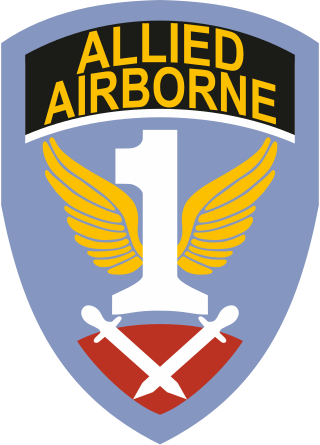
The First Allied Airborne Army was an Allied formation formed on 2 August 1944 by the order of General Dwight D. Eisenhower, the Supreme Allied Commander of the Allied Expeditionary Force.

The 11th Armoured Division was an armoured division of the British Army which was created in March 1941 during the Second World War. The division was formed in response to the unanticipated success of the German panzer divisions. The 11th Armoured was responsible for several major victories in the Battle of Normandy from in the summer of 1944, shortly after the Normandy landings, and it participated in the Allied advance from Paris to the Rhine, the Rhine crossing in March 1945. It was disbanded in January 1946 and reformed towards the end of 1950. In 1956, it was converted into the 4th Infantry Division.

Major Roy Alexander Farran was a British-Canadian soldier, politician, farmer, author and journalist. He was highly decorated for his exploits with the Special Air Service (SAS) during the Second World War. Farran became widely known after his court-martial on a charge of murdering an unarmed 17-year-old member of the Jewish underground militant group Lehi during his command of an undercover Palestine Police special squad. After his brother was killed in a revenge attack, Farran emigrated to Canada where he forged a successful business and political career, holding a seat in the Legislative Assembly of Alberta from 1971 to 1979 sitting with the Progressive Conservative caucus. He served as a cabinet minister in the government of Premier Peter Lougheed during that period.

The 2nd Parachute Brigade was an airborne forces brigade formed by the British Army during the Second World War.
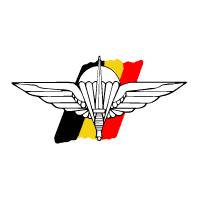
The Special Operations Regiment is a special operations force of the Land Component of the Belgian Armed Forces. Its headquarters is located in Heverlee. It was known as the Light Brigade until 3 July 2018 when it was renamed and transformed into its current form.

The 6th Airlanding Brigade was an airborne infantry brigade of the British Army during the Second World War. Created during May 1943, the brigade was composed of three glider infantry battalions and supporting units, and was assigned to the 6th Airborne Division, alongside the 3rd and 5th Parachute Brigades.

Operation Houndsworth was a British Special Air Service operation during World War II. The operation, carried out by "A" Squadron, 1st Special Air Service between 6 June and 6 September 1944, was centred on Dijon in the Burgundy region of France. Their objective was to disrupt German lines of communication, coordinate the activities of the French Resistance and prevent German reinforcements moving to the Normandy beachheads, especially the 2nd SS Panzer Division Das Reich.

The 1st Airlanding Light Regiment was an airborne forces unit of the British Army's Royal Artillery during the Second World War.

The 3rd Parachute Chasseur Regiment or 3e RCP was a French unit of Second World War known in the British Army as the 3rd SAS Regiment and originally named the 3rd Air Infantry Battalion. Involved in the operations of the Liberation of France and The Netherlands, the unit was temporarily dissolved at the end of the conflict and was reorganized between 1979 and 1998.
The following is a hierarchical outline for the structure of the British Army in 1989. The most authoritative source for this type of information available is Ministry of Defence, Master Order of Battle, and United Kingdom Land Forces, HQ UKLF, UKLF ORBAT Review Action Plan, HQ UKLF, 1990.

The Special Air Service Troops was a brigade sized formation of the Special Air Service, which was founded on 7 January 1944 in the United Kingdom during the Second World War. The formation was also known as the SAS Brigade. The brigade was a multi-national force of British, French, and Belgian units. On formation, the brigade commanded the 1st and 2nd Special Air Service regiments, the French 2nd and 3rd Parachute Battalions, and the Belgian Parachute Company. In March 1944, F Squadron, GHQ Liaison Regiment was added to the brigade. In 1945, the Belgian parachute company was redesignated as 5th Special Air Service. The French units were also redesignated as the 2nd Parachute Chasseur Regiment and the 3rd Parachute Chasseur Regiment.
Operation Howard was a British special forces operation by B and C Squadrons, 1st Special Air Service led by Paddy Mayne that took place from 6 to 29 April 1945. It was to provide reconnaissance for the Canadian 4th Armoured Division in its advance towards Oldenburg in north-western Germany. The operation was hampered by German ambushes and boggy ground in which the Jeeps found hard going. The operation succeeded in its objective but suffered a number of casualties.

Operation Kipling was a British special forces operation that took place during the Second World War in German-occupied France between 13 August to 26 September 1944. Originally supposed to be part of a larger airborne operation (Transfigure), 'C' Squadron, 1st Special Air Service commanded by Major Tony Marsh, was air dropped in an area near Orléans to disrupt German communications and troop movements. The operation was a success with minimum casualties, and was the last SAS mission to be carried out as part of Operation Overlord.
















